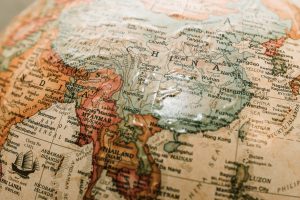Blog
China: Predatory Lender or Development Partner in the Developing World?
Written by Megan Araghi
February 26, 2020
All roads lead back to China
The ancient Silk Road is experiencing a revival and reinvention through China’s ambitious infrastructure project, the Belt and Road Initiative (BRI). Arguably one of the largest infrastructure plans in history, China’s reach now stretches like tentacles across South Asia to Europe. Founded in 2013, BRI is China’s decades-long scheme to “develop a series of trade routes leading to and from China,” mimicking the transport lines of the Silk Road over both land and sea. Spanning multiple continents, China is financing a string of infrastructure projects in developing and middle-income countries. The goal is to ease trade with China as much as possible, increasing China’s influence.
Chinese investments increase economic risk
Naturally, concerns about China’s rising influence alarms the West. There are doubts that developing countries can’t repay infrastructure loans provided by China. And fear is arising that China is saddling countries huge, risky loans. Further, if a country can’t pay a loan China will often retake the infrastructure asset. The question is if this a deliberate strategy by China to gain strategic assets. Ownership of such assets, like ports in busy sea lanes, gives China “strategic dominance” and “political leverage”.
Africa is welcoming China’s involvement
Others, however, see China as a necessary and beneficial development partner. Many countries, especially in Africa, view China’s activity as favourable and mutually beneficial. For example, China invests in Africa with no conditions. The International Monetary Fund and the World Bank also do not often fund infrastructure projects in Africa. China is therefore seen as a “saviour” by many Africans, and there is a desire to copy its economic model. For countries enveloped in the BRI, easy access to capital is perhaps the best benefit of a partnership with China.
The case of Hambantota Port, Sri Lanka
To better understand how China’s debt-for-equity swaps work, let’s look at the Hambantota Port in Sri Lanka. The quiet town of Hambantota is just a small stretch from one of the busiest sea lanes in the world. Given this advantage, China loaned Sri Lanka USD$1.1 billion to build a port. When Sri Lanka failed to repay these loans, ownership was ceded to China for 99 years, letting China essentially own and operate the port. This type of “asset seizure” alarms the West, and is viewed as China gaining “influence in geostrategic areas.”
China – economic saviour or neo-coloniser?
The BRI is neither all positive nor negative. But a few key questions arise: Are BRI partnerships between China and developing countries mutually beneficial? Or, is China a neo-coloniser? We need a more nuanced idea of China’s ‘debt diplomacy’. Developing countries need infrastructure for development and shouldn’t shun all Chinese investment. But there are real concerns about the debt risk and equity of terms. A recent World Bank report on the BRI states that loan terms “may not be the most favourable” for developing countries.
Increased transparency
Key changes can help low-income countries gain more benefits and minimize risk. First, China should make terms of BRI projects public at all stages. For example, the World Bank advocates for increased transparency in “planning to budgeting and procurement and public reporting of debt levels.” With more knowledge, developing countries could make better decisions, lobby China for better terms, or even withdraw from BRI projects.
Adherence to international standards and legal support facility needed
Second, China should follow international standards in lending practices used by development banks, such as the IMF’s Debt-Limit Policy. This would give more protection for developing countries. Lastly, an “international legal support facility”, like the African Legal Support Facility of the African Development Bank, could be established. This would address any “potential asymmetries in financial sophistication between BRI and developing country borrowers” by reviewing China’s loan terms.
Clearly, this topic merits a much deeper discussion. But we can begin to understand how developing countries can level the playing field with China.

